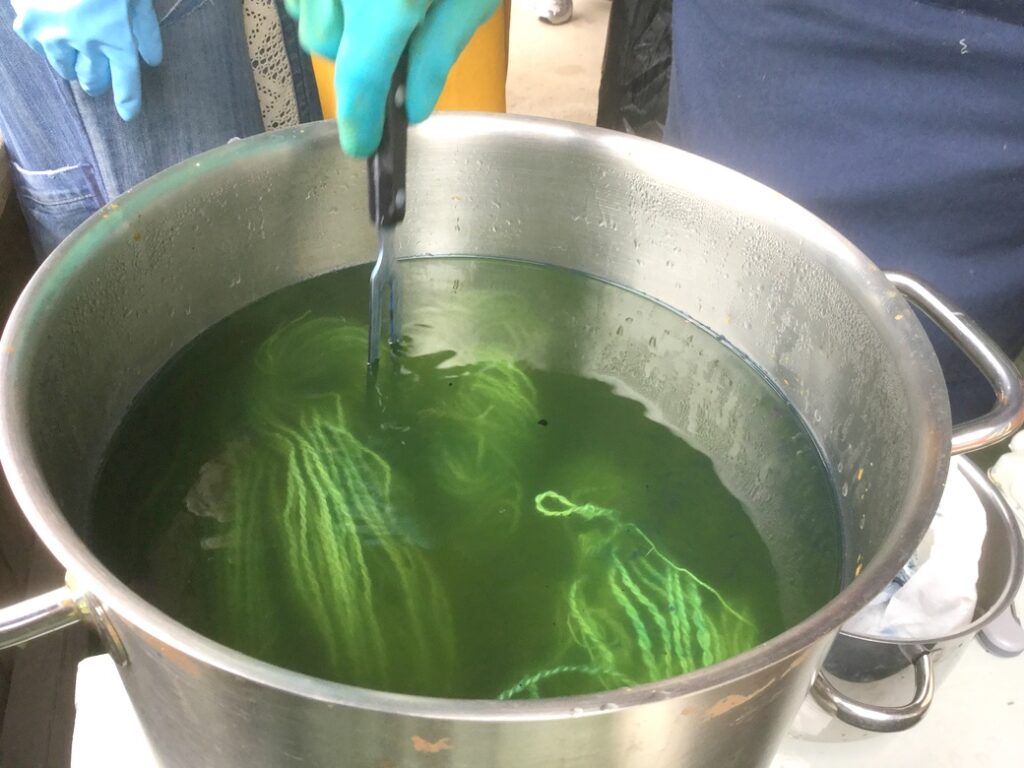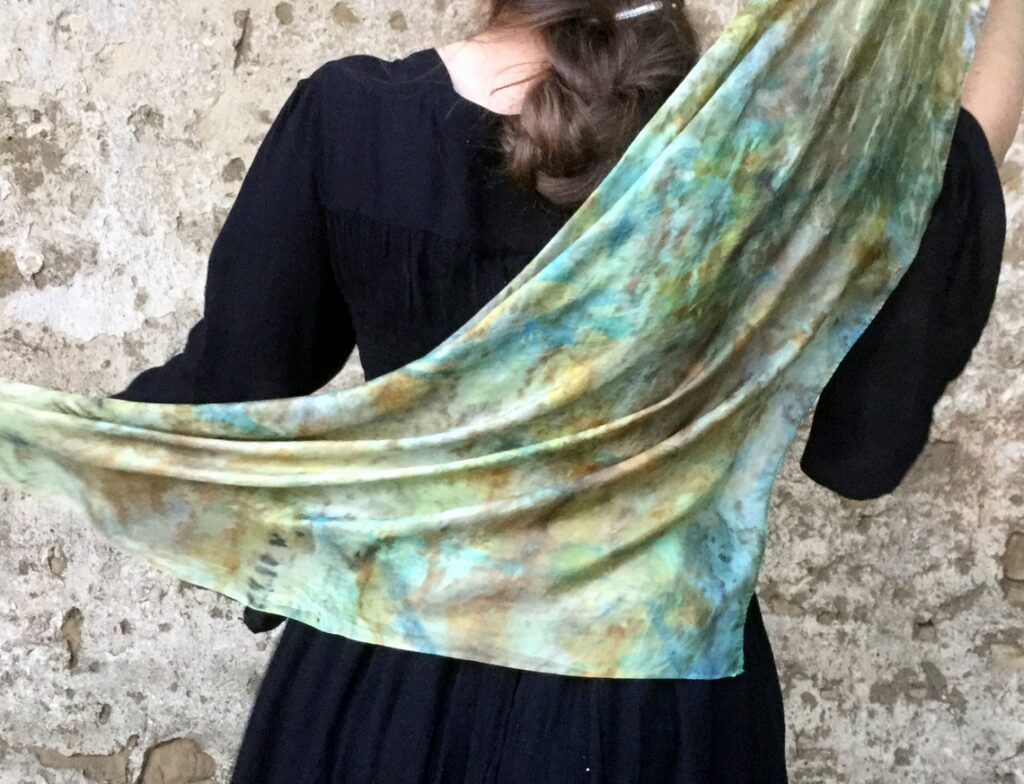This summer I attended a course to acquire new knowledge about dyeing with indigo. The course was organized by the NGO IIDA courses and was guided by Liis Luhamaa, who has also written a very comprehensive blog about the use of different natural colours. There I came to the conclusion that dyeing with indigo is very complex and requires patience and time.
First, the yarns had to be prepared and soaked in water. When the preparations related to the dye were done, then the dye had to be heated and the temperature constantly monitored. I wanted different shades of blue and therefore added my whisks of yarn in the pot at different times to soak and I was very satisfied with the result.

Mixing indigo dyestuff

The colour of the mixture in the pot should be greenish

You have to be careful with the yarns when twisting them in the pot and lifting them out

Lifting the yarns out of the pot
I also experimented with dyeing silk fabric with indigo. For this purpose, I used a silk fabric previously dyed with rose leaves, which I also mentioned in my previous post. At first I folded up the fabric and soaked it in water and then dyed it, but the dye didn’t stick very well that way.

Folded up silk fabric
Then I decided to just roll up the fabric and place it loosely in the dye pot and then I kept it in the dye for another ten minutes. I was more or less satisfied with the result, and I also realised that the next summer will be in blue tones for me. I definitely want to experiment with dyeing different fabrics with indigo.

Silk scarf dyed with indigo and rose leaves
